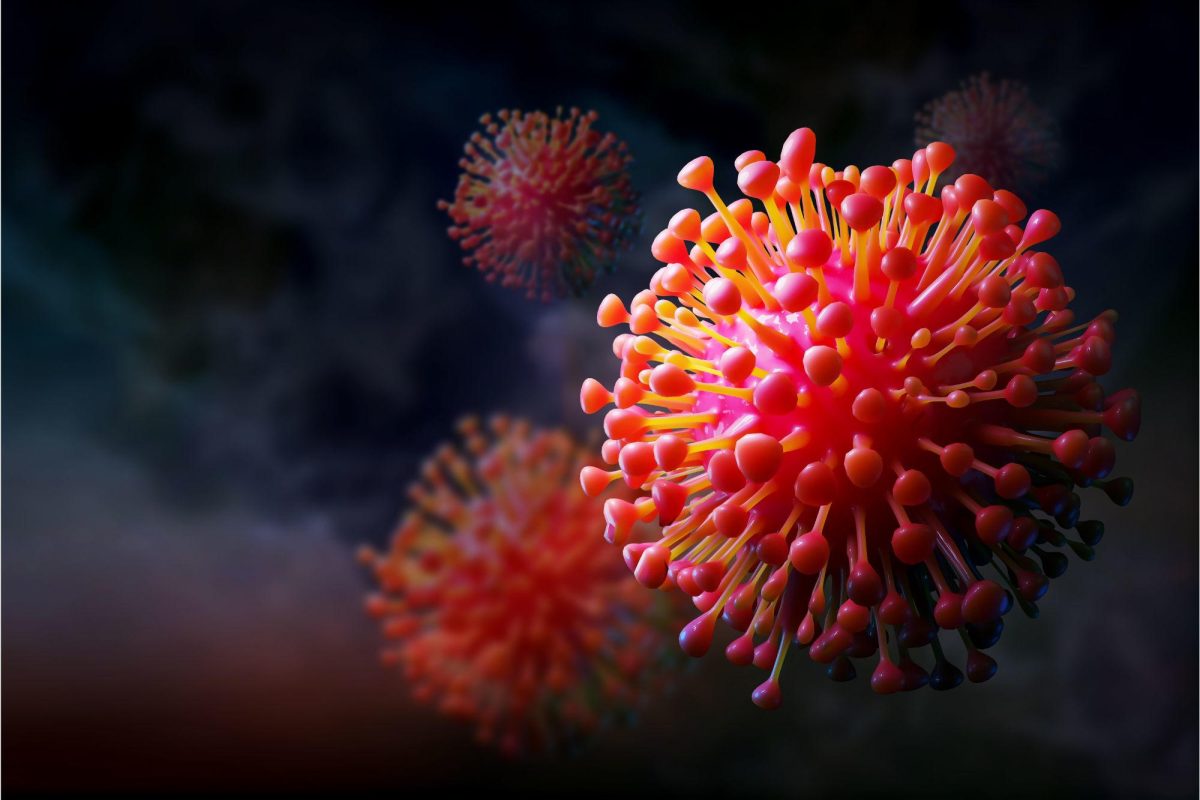While untreated mice perished after three days, however, all mice treated with the microrobots survived past 30 days.
Nanoengineers from the University of California, San Diego, have created tiny robots called microrobots that can swim around in the lungs, deliver medicine, and be used to treat life-threatening cases of bacterial pneumonia.
The microrobots safely eliminated the bacteria that causes pneumonia in the lungs of mice, resulting in 100% survival. In contrast, mice that were not treated all passed away three days after infection.
The findings were recently published in the journal Nature Materials.
The microrobots are constructed from algal cells whose surfaces are speckled with nanoparticles containing antibiotics. The algae provide mobility, allowing the microrobots to swim around and deliver antibiotics straight to more bacteria in the lungs. The small biodegradable polymer spheres that make up the antibiotic-containing nanoparticles are coated with the cell membranes of neutrophils, a type of white blood cell.
These cell membranes are unique in that they absorb and neutralize inflammatory molecules generated by bacteria and the body’s immune system. As a result, the microrobots are better capable of fighting lung infections since they can lessen detrimental inflammation.

Colored SEM image of a pneumonia-fighting microrobot made of an algae cell (green) covered with biodegradable polymer nanoparticles (brown). The nanoparticles contain antibiotics and are coated with neutrophil cell membranes. Credit: Fangyu Zhang and Zhengxing Li
Both Joseph Wang and Liangfang Zhang, professors of nanoengineering at the UC San Diego Jacobs School of Engineering, collaborated on the project. Wang is a world leader in the field of micro- and nanorobotics, and Zhang is a world leader in the development of nanoparticles that resemble living cells to cure infections and diseases.
Together, they have pioneered the development of tiny drug-delivering robots that can be safely used in live animals to treat bacterial infections in the stomach and blood. Treating bacterial lung infections is the latest in their line of work.
“Our goal is to do targeted drug delivery into more challenging parts of the body, like the lungs. And we want to do it in a way that is safe, easy, biocompatible, and long-lasting,” said Zhang. “That is what we’ve demonstrated in this work.”
The team used the microrobots to treat mice with an acute and potentially fatal form of pneumonia caused by the bacteria Pseudomonas aeruginosa. This form of pneumonia commonly affects patients who receive mechanical ventilation in the intensive care unit. The researchers administered the microrobots to the lungs of the mice through a tube inserted in the windpipe. The infections fully cleared up after one week. All mice treated with the microrobots survived past 30 days, while untreated mice died within three days.
Treatment with the microrobots was also more effective than an IV injection of antibiotics into the bloodstream. The latter required a dose of antibiotics that was 3000 times higher than that used in the microrobots to achieve the same effect. For comparison, a dose of microrobots provided 500 nanograms of antibiotics per mouse, while an IV injection provided 1.644 milligrams of antibiotics per mouse.
The team’s approach is so effective because it puts the medication right where it needs to go rather than diffusing it through the rest of the body.
“These results show how targeted drug delivery combined with active movement from the microalgae improves therapeutic efficacy,” said Wang.
“With an IV injection, sometimes only a very small fraction of antibiotics will get into the lungs. That’s why many current antibiotic treatments for pneumonia don’t work as well as needed, leading to very high mortality rates in the sickest patients,” said Victor Nizet, professor at UC San Diego School of Medicine and Skaggs School of Pharmacy and Pharmaceutical Sciences, who is a co-author on the study and a physician-scientist collaborator of Wang and Zhang. “Based on these mouse data, we see that the microrobots could potentially improve antibiotic penetration to kill bacterial pathogens and save more patients’ lives.”
And if the thought of putting algae cells in your lungs makes you squeamish, the researchers say that this approach is safe. After treatment, the body’s immune cells efficiently digest the algae, along with any remaining nanoparticles. “Nothing toxic is left behind,” said Wang.
The work is still at the proof-of-concept stage. The team plans to do more basic research to understand exactly how the microrobots interact with the immune system. The next steps also include studies to validate the microrobot treatment and scaling it up before testing it in larger animals and eventually, in humans.
“We’re pushing the boundary further in the field of targeted drug delivery,” said Zhang.
Reference: “Nanoparticle-modified microrobots for in vivo antibiotic delivery to treat acute bacterial pneumonia” by Fangyu Zhang, Jia Zhuang, Zhengxing Li, Hua Gong, Berta Esteban-Fernández de Ávila, Yaou Duan, Qiangzhe Zhang, Jiarong Zhou, Lu Yin, Emil Karshalev, Weiwei Gao, Victor Nizet, Ronnie H. Fang, Liangfang Zhang and Joseph Wang, 22 September 2022, Nature Materials.
DOI: 10.1038/s41563-022-01360-9
The study was funded by the National Institutes of Health.
Share your story or advertise with us: Whatsapp: +2347068606071 Email: info@newspotng.com















